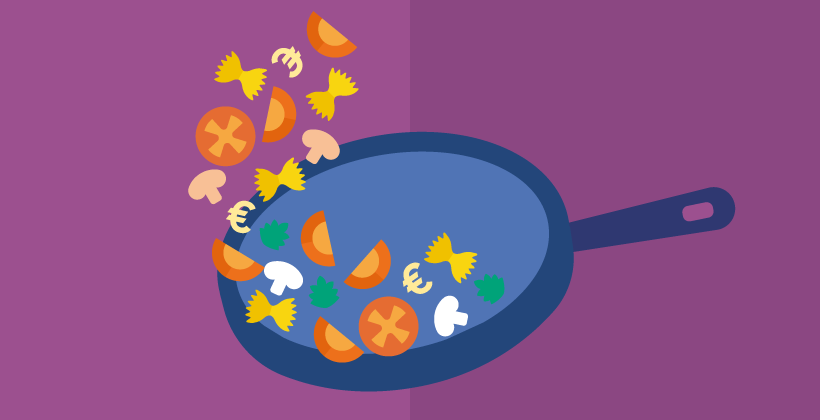Food shelf life and its importance for consumers
Last Updated : 16 October 2013Shelf-life is the length of time a food can be kept under stated storage conditions while maintaining its optimum safety and quality. Shelf life of a food begins from the time the food is manufactured and is dependent on many factors such as its manufacturing process, type of packaging, storage conditions and ingredients.
How is shelf-life indicated on foods?
Shelf-life is normally indicated on a food label by either a best-before date or a use-by-date.
- A best-before date reflects the length of time a food can reasonably be expected to retain its best quality e.g. flavour. Examples of foods which have best before dates include canned, dried and frozen foods.
- A use-by-date date is the length of time a food can reasonably be expected to be safe to consume when stored under stated storage conditions. Consequently these foods may present a risk of food poisoning if consumed after the use-by date. Examples of foods which have use-by-dates include chilled dairy products, cooked meats and prepared salads.
How is shelf-life determined?
It is the responsibility of food manufacturers to determine the shelf-life and to label their products accordingly. This includes the storage conditions required to achieve that shelf-life, e.g. ‘keep refrigerated once opened’.
Shelf-life is typically determined during the development of a food. Initially, the manufacturer determines the characteristics (intrinsic and extrinsic) of the food which affect its safety and/or quality. These characteristics include the ingredients used, manufacturing process, type of packaging, e.g. vacuum packing or modified atmosphere packaging sometimes used to extend product shelf-life, and the storage conditions under which the product will be sold. Where necessary, the manufacturer may also conduct other studies such as microbiological sampling and analysis.
Shelf-life determination is an integral part of manufacturers’ food safety management systems.1 As part of regular reviews of these systems; the manufacturer validates the shelf-life. This is particularly important when modifying products, production sites or production equipment.
What are the legal requirements for shelf-life?
The key European legislation related to shelf-life is Directive 2000/13/EC on labelling, presentation and advertising of foodstuffs, Regulation 1169/2011 on food information for consumers and Regulation 2073/2005 on microbiological criteria for foodstuffs.2,4
Directive 2000/13/EC refers to shelf-life as the date of minimum durability and defines it as the date until which food retains its specific properties when properly stored.2 This legislation differentiates between best-before and use-by dates and outlines some products, exempt from shelf-life labelling such as wine, cooking salt and vinegar.2
Regulation 1169/2011 will replace Directive 2000/13/EC in December 2014 and states that information such as the date of minimum durability or use-by-date should be provided in a conspicuous, legible and indelible format on product packaging.2,3 For frozen meat, meat preparations and unprocessed fishery products, the Regulation also requires an indication of the date of freezing, or the date of first freezing in cases where the product has been frozen more than once e.g. when large pieces of meat/fish are cut into small portions for selling. Under the Regulation, once the use-by-date has passed, a food is deemed unsafe to consume.3
Regulation 2073/2005 lays down criteria for specific combinations of microorganisms and food e.g. Listeria monocytogenes in ready to eat foods and obliges companies to conduct studies, as necessary, to ensure these criteria are not exceeded throughout the shelf-life of the food.4
What is the practical relevance of shelf-life to consumers?
The aim of shelf-life is to help consumers make safe and informed use of foods. The shelf-life of foods should only be considered valid, if the product is purchased intact and undamaged. Consumers should always follow manufacturers’ instructions on storage, particularly temperature and use of the product after opening. It is also recommended that consumers consider shelf-life information when purchasing foods to avoid unnecessary food waste.5 For example, unlike foods with use-by-dates, many foods with best-before dates will be safe to eat even if this date has passed.
References
- Directive 2000/13/EC of the European Parliament and of the Council of 20 March 2000 on labelling, presentation and advertising of foodstuffs.
- Regulation 1169/2011/EU of the European Parliament and of the Council of 25 October 2011 on the provision of food information to consumers.
- Regulation 2073/2005/EC of the 15 November 2005 on microbiological criteria for foodstuffs.
- European Commission. Fact sheet: What can I do in my daily life to limit food waste?



